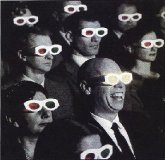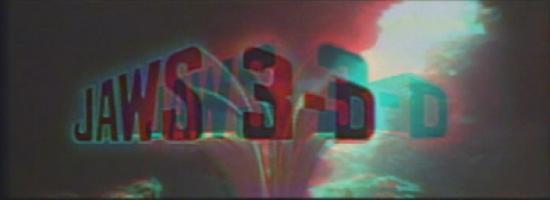3D Movies - The Gimmick That Will Not Die
Recently ardent followers of technology will have noticed a resurgence in the talk of 3D movies and TV. The more cynical amongst us wonder if it ever went away, especially when you look back at the history of it all. See it all started way back in the 1950s, yes that far ago, although they used the polarised technique back then at the start.
That system should be easy to understand for anyone with a polarised set of sunglasses, or experience of a similar filter on a camera. Basically, project one image through a polarised filter at one angle, and a second image directly on top through another separate filter rotated at 90 degrees. The audience wears special glasses with polarised lenses (much like on sunglasses) however just like those on the projectors, one is rotated.
What you get is each eye only seeing the image meant for that eye, had your head been sitting at the position of the movie camera. Much like polarised sunglasses let you see the reflections on glass at one angle, and no reflections at all at another. Try it next time you are wearing some, and you see a bright image reflected off a shop window, or the sky off a house pane.
The problem with this system, was of course cost, since it's expensive to run two projectors when most cinemas could only afford to have one. That's why later on some bright spark decided to project the whole lot out of one unit, from one piece of film, colouring the left eye information red, and the right blue or green. The downside is of course, everything looks bloody red and blue, or red and green.
This is what many of us remember from the 80s 3D movies, which included such amazing classics as Jaws 3-D, Friday the 13th Part 3, Amityville 3-D and Spacehunter: Adventures in the Forbidden Zone. Recently, we thought it would be fun to get some coloured specs and give these a whirl, on a big 6ft across screen of course. The question being, had they stood the test of time.
Unfortunately the answer was, no, they hadn't. Having watched all of Jaws 3-D, a Shrek short and the first 20 minutes of Amityville 3-D, I can honestly say that whilst they have their moments, the overriding impact of them all has to be that everything looks red and blue, and eventually gives you a headache.
These days you can enjoy quite a few CGI movies, and specially made documentary 3D offerings in places like IMAX cinemas, all presented in polarised 3D which of course doesn't suffer that red/blue feeling. On top of that, a few significant motion pictures have been shot in the last couple of years especially with that extra dimension in mind.
Whilst this voyage to the past has been a bit disappointing, it has whetted my appetite to visit an IMAX cinema in London and see what modern technology has to offer. However I do wonder if the real problem with it all is linked heavily with the fact that, like it or not, the act of converging and diverging ones eyes to view things near and afar, is not intrinsically linked with pulling them into focus, and therefore doomed to ultimately only ever give me a headache.
Keeping with the 3D theme for our first video, this is a compilation of examples from the work of a guy called William J. Beaty, who makes holograms purely by hand. He calls this technique Abrasion Holography, which basically means scratching plastic so that when the light catches the scratches, it hits them at specific points depending on your point of view. Changing your position changes the light, and the resulting patterns make what appears to be a hologram.
Next up, we have an old classic tune Bohemian Rhapsody, from a classic old school group Queen, all performed by old computer equipment. Think that noise your disc drive used to make, back before we all stopped using them, controlled to make that noise at different pitches on demand. Anyway, go listen!
That system should be easy to understand for anyone with a polarised set of sunglasses, or experience of a similar filter on a camera. Basically, project one image through a polarised filter at one angle, and a second image directly on top through another separate filter rotated at 90 degrees. The audience wears special glasses with polarised lenses (much like on sunglasses) however just like those on the projectors, one is rotated.
What you get is each eye only seeing the image meant for that eye, had your head been sitting at the position of the movie camera. Much like polarised sunglasses let you see the reflections on glass at one angle, and no reflections at all at another. Try it next time you are wearing some, and you see a bright image reflected off a shop window, or the sky off a house pane.
The problem with this system, was of course cost, since it's expensive to run two projectors when most cinemas could only afford to have one. That's why later on some bright spark decided to project the whole lot out of one unit, from one piece of film, colouring the left eye information red, and the right blue or green. The downside is of course, everything looks bloody red and blue, or red and green.
This is what many of us remember from the 80s 3D movies, which included such amazing classics as Jaws 3-D, Friday the 13th Part 3, Amityville 3-D and Spacehunter: Adventures in the Forbidden Zone. Recently, we thought it would be fun to get some coloured specs and give these a whirl, on a big 6ft across screen of course. The question being, had they stood the test of time.
Unfortunately the answer was, no, they hadn't. Having watched all of Jaws 3-D, a Shrek short and the first 20 minutes of Amityville 3-D, I can honestly say that whilst they have their moments, the overriding impact of them all has to be that everything looks red and blue, and eventually gives you a headache.
These days you can enjoy quite a few CGI movies, and specially made documentary 3D offerings in places like IMAX cinemas, all presented in polarised 3D which of course doesn't suffer that red/blue feeling. On top of that, a few significant motion pictures have been shot in the last couple of years especially with that extra dimension in mind.
Whilst this voyage to the past has been a bit disappointing, it has whetted my appetite to visit an IMAX cinema in London and see what modern technology has to offer. However I do wonder if the real problem with it all is linked heavily with the fact that, like it or not, the act of converging and diverging ones eyes to view things near and afar, is not intrinsically linked with pulling them into focus, and therefore doomed to ultimately only ever give me a headache.
This Weeks Videos
Keeping with the 3D theme for our first video, this is a compilation of examples from the work of a guy called William J. Beaty, who makes holograms purely by hand. He calls this technique Abrasion Holography, which basically means scratching plastic so that when the light catches the scratches, it hits them at specific points depending on your point of view. Changing your position changes the light, and the resulting patterns make what appears to be a hologram.
Next up, we have an old classic tune Bohemian Rhapsody, from a classic old school group Queen, all performed by old computer equipment. Think that noise your disc drive used to make, back before we all stopped using them, controlled to make that noise at different pitches on demand. Anyway, go listen!



































Your Opinions and Comments
Be the first to post a comment!